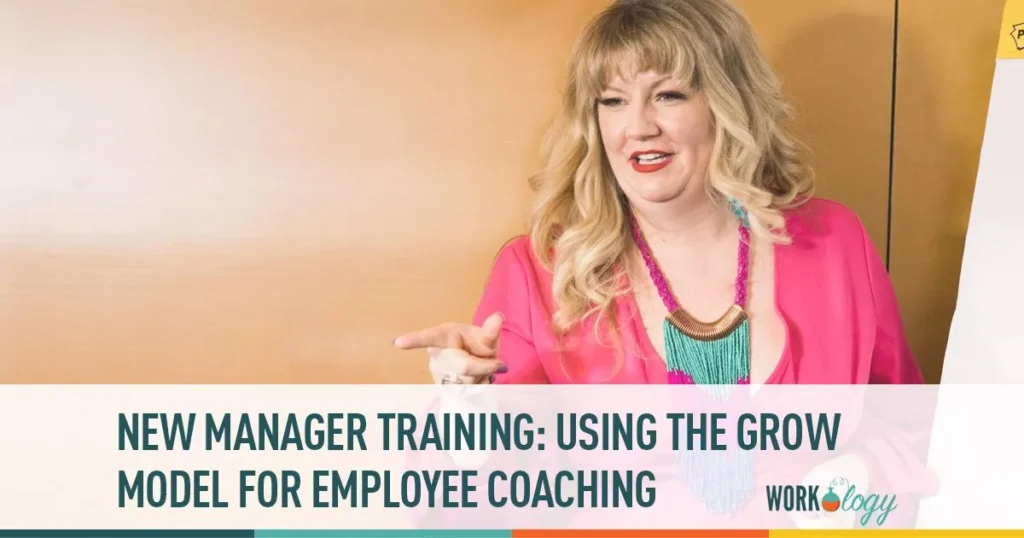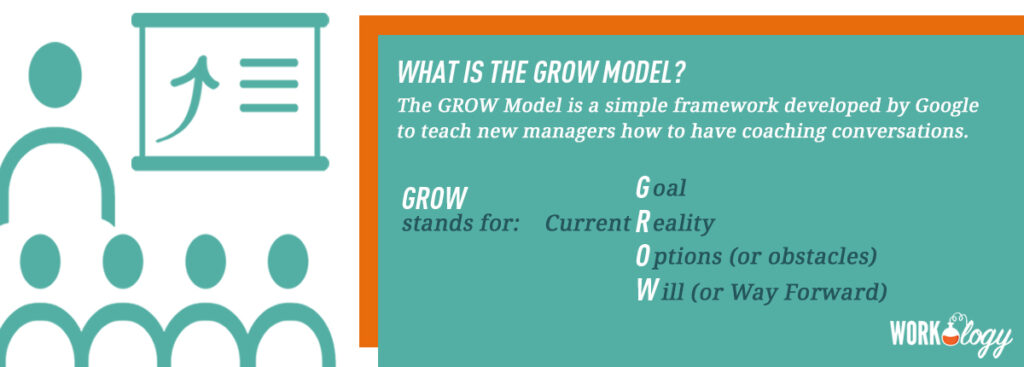Why coach employees? Being a manager is much more complicated than tasking team members with projects and conducting performance reviews. In order to create space for employees to develop current skills and learn new ones, managers need to be a coach, a mentor, and a cheerleader. Hand-holding only creates a team reliant upon a manager, not a self-sufficient team that seeks learning resources and solutions to problems. For the success of our teams, we need to encourage the latter.
I have used coaching to bridge skills gaps and help my team members learn new skills. I have also worked with managers across all industries to help them develop coaching skills to support their own teams. Managers must offer resources to develop good leaders, and this starts with personal development coaching to help your current workforce grow into your future leaders. As HR professionals, we have to consider introducing employee coaching and encouraging new managers to adopt the opportunity.
Why Use the GROW Model in Employee Coaching?
One of the most invaluable roles as a new manager is to coach your employees to be their best. Using the GROW Model in employee coaching can help employees make better decisions, learn new skills, solve problems and progress in their careers.
The GROW Model operates on the premise that the manager is a facilitator, but not an expert.
The Four Stages of the GROW Model
As a new manager, learning the four stages of the GROW model can help managers create a format for an employee coaching conversation. These are the four main steps:
Step 1 – GOALS (What do you want?)
As a new manager, your role is to understand your employee and establish what they want. The goal is to ensure the employee leaves the coaching session with clear deliverables. Managers must set a challenging and SMART (specific, measurable, and achievable in a realistic time frame) goal. The manager can ask the employee questions like these:
• Where do you see yourself in the next 3-5 years?’
• What are your personal and professional goals?
Step 2 – REALITY (What’s happening?)
It’s important for managers to coach employees in the present, meaning if a problem is identified, address it while it’s happening now – not during the next performance review. Having coaching meetings on a regular basis allows you to do so. For example, you can ask your employee these questions:
• Why do you think you have not yet achieved your goals? What is hindering you from achieving your goal?
• What steps have you taken so far toward achieving your goals?
Step 3 – OPTIONS (What might you do?)
As a manager, the ball is in your court at this stage. This is a brainstorming stage to generate some options with your team members so that they are involved in their own development and can help you do your job as manager to help them do so. The questions to ask here are:
• What options may you have for achieving your goals?
• What might be the best first step toward achieving your goal?
Stage 4 – WHAT’S NEXT (What will you do?)
It’s crucial that your team members define actionable outcomes. As a manager (coach), your job is to remove obstacles, understand what might be hindering them, and allow them to set reasonable and reachable goals. Some questions to consider:
• How will you keep yourself motivated to achieve your goal?
• What 2 or 3 actions can you take in the next week/month/quarter toward achieving your goal?

Qualities of Managers That Use the GROW Model
According to Google’s manager research, the qualities that managers possess directly impacts the productivity of their teams. As HR leaders, we should ensure that our new manager training encourages new managers to:
• Empower their team without micromanaging.
• Create an inclusive team environment by showing concern for success and well-being.
• Be productive and results-oriented.
• Be good communicators that listen and share information.
• Support career development and team performance.
• Have a clear vision/strategy for the team.
• Have the key technical skills to help advise the team.
• Collaborative
• Strong decision-makers.
Finally, employee coaching using the GROW Model can positively impact employee experience by ensuring employees feel that they have a future within your organization. Coached employees are more productive, innovative and report higher job satisfaction.









